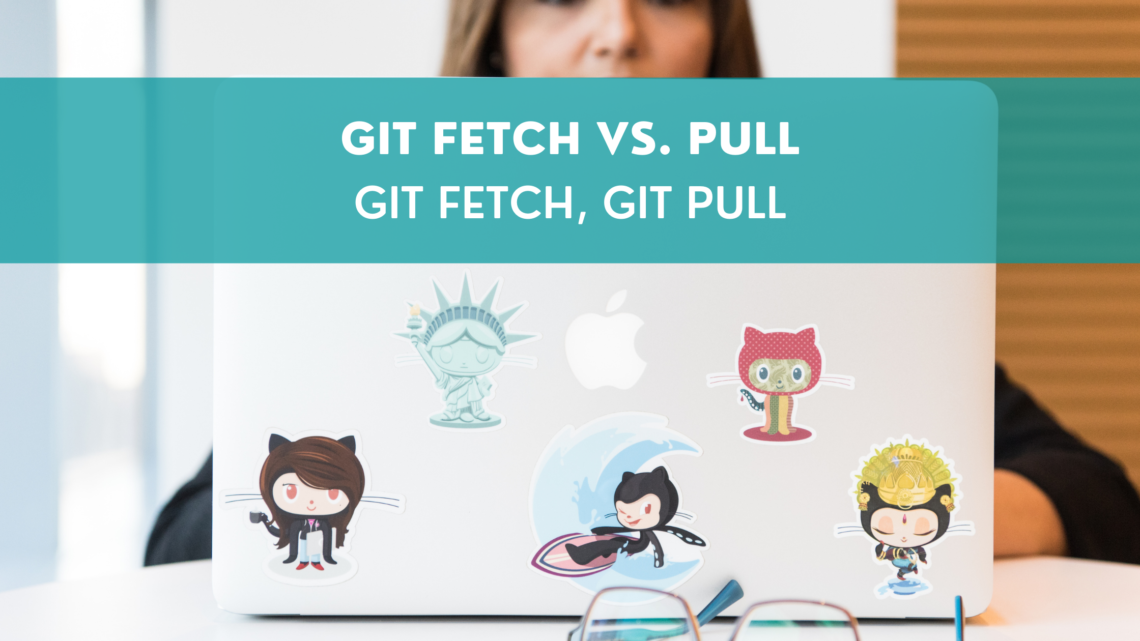

The fetch field indicates the refspec path to the local ref. This set of remote and branch mappings in the config file is referred to as the refspec.

Url = fetch = +refs/heads/*:refs/remotes/origin/* Git does this by creating a "remote-tracking branch" in the local repository, which you can think of as an intermediate version of the branch that Git uses to keep the local and remote branch copies in sync.Īn entry is created for the new origin remote and master branch in the repo Git config file located at. However, by default only the master (or main) branch is set up to track the remote branch. The local copy also contains the repository config information.
#GIT FETCH AND GIT PULL FULL#
When you clone a remote repository, a local copy is created on your machine which contains the full set of the repository's commits (and other Git objects such as blobs, trees, and tags).
#GIT FETCH AND GIT PULL UPDATE#
Git fetch is used to update your local repository with changes in the remote, so before diving in it helps to understand how Git links local and remote repositories.
#GIT FETCH AND GIT PULL HOW TO#
The command git pull takes it one step further, by merging those downloaded commits to your working copy.Ĭontinue reading to learn more about how git fetch works, how git fetch compares to git pull, and how to use git fetch effectively. This local object database uses remote-tracking branches in conjunction with the refspec to download specific commits using the command git fetch. To support a distributed architecture, Git’s creator Linus Torvalds developed a repository system to store Git’s internal objects. This allows you and your coworkers to checkout any version of the codebase, make changes offline, and later push them to the remote repository so everyone else can view and access them. Now that we’ve gone over what the respective commands do and have compared Git pull vs fetch, let’s learn how you Git pull and Git fetch using the cross-platform GitKraken Git GUI to visualize your repository and how to perform these actions in the CLI.Git was built around a distributed model to offer collaboration freedom. On the other hand, fetch might also be preferred by Git veterans who just want more control over what’s happening in their repo. This action can be great if you’re newer to Git, as it provides more visibility about the changes being introduced. Git fetch is a bit different you can use the Git fetch command to see all of the remote’s changes without applying them. Git pull is a more advanced action and it’s important to understand that you will be introducing changes and immediately applying them to your currently checked out branch. Using the Git pull command can be seen in one light as a feature of convenience you’re probably less worried about introducing conflicts into your local repo and you just want the most up-to-date changes from the remote branch you’re pulling from.

On the other hand, Git pull is faster as you’re performing multiple actions in one – a better bang for your buck. When comparing Git pull vs fetch, Git fetch is a safer alternative because it pulls in all the commits from your remote but doesn’t make any changes to your local files. How do you perform an interactive rebase?.How do you Git push to a remote branch?.How do you create a GitHub pull request?.Can you cherry pick multiple commits in Git?.Can you cherry pick from another repository in Git?.How do you set an upstream branch in Git?.How do you delete a remote branch in Git?.How do you delete a local branch in Git?.How do you checkout a remote branch in Git?.


 0 kommentar(er)
0 kommentar(er)
